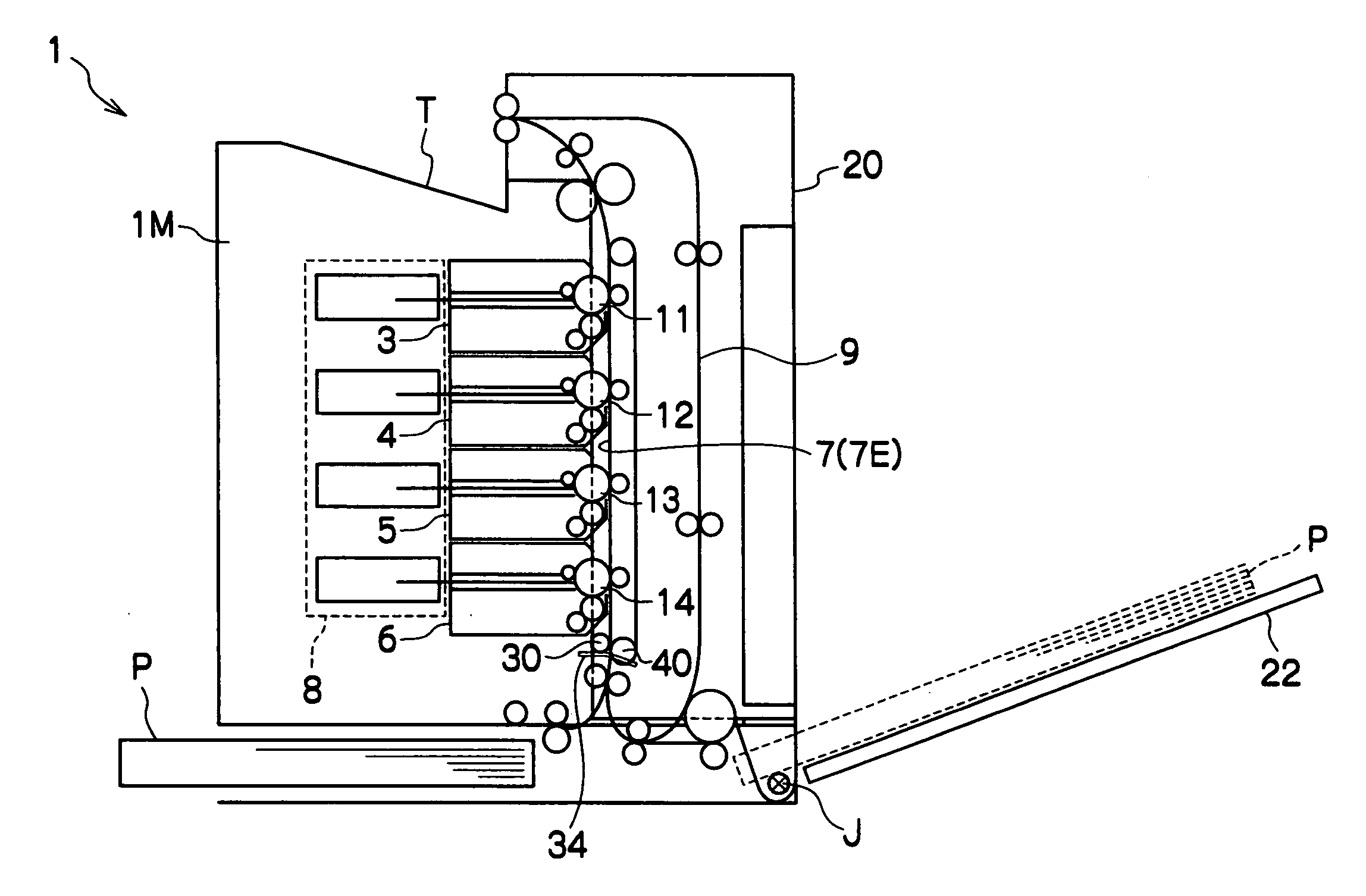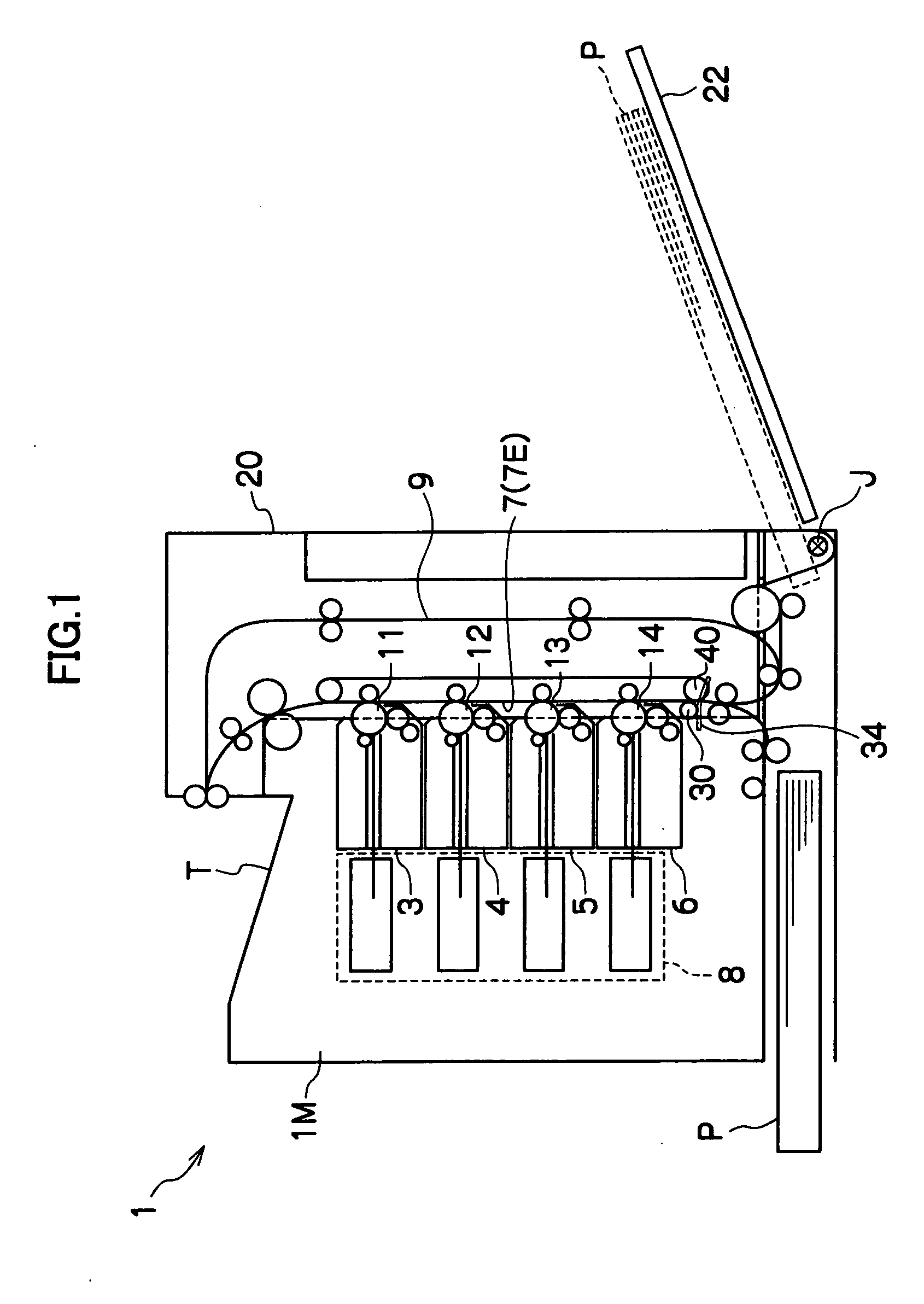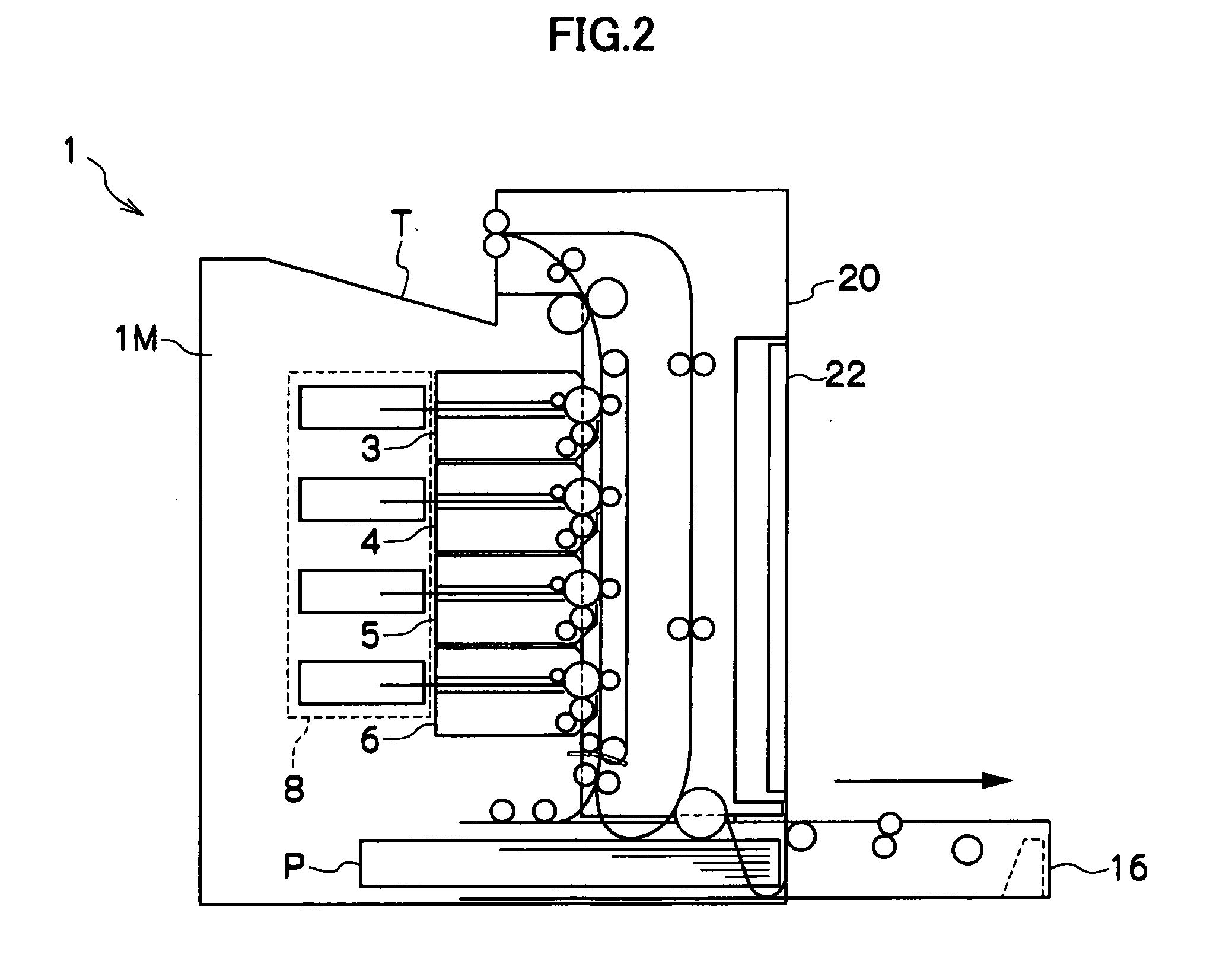Image forming device
- Summary
- Abstract
- Description
- Claims
- Application Information
AI Technical Summary
Benefits of technology
Problems solved by technology
Method used
Image
Examples
Embodiment Construction
[0025] An embodiment of the present invention will be described hereinafter. As shown in FIGS. 1 and 2, a printer 1 relating to the embodiment of the present invention is a full-color printer. Note that the right side in FIG. 1 corresponds to the front side of the device, and the left side in FIG. 1 corresponds to the rear side of the device. Four process cartridges 3, 4, 5, 6 which are disposed in a vertical row substantially vertically, and a transfer belt 7 which is disposed along the process cartridges 3, 4, 5, 6, are provided within a printer main body 1M which structures the printer 1. The transfer belt 7 is opened, and the process cartridges 3, 4, 5, 6 can be installed and removed in a substantially horizontal direction into and from the open space. Photosensitive drums (image carriers) 11, 12, 13, 14 are provided at the process cartridges 3, 4, 5, 6, respectively.
[0026] The printer 1 has an ROS (Raster Output Scanner) 8 which carries out image exposure at the respective pho...
PUM
 Login to View More
Login to View More Abstract
Description
Claims
Application Information
 Login to View More
Login to View More - R&D
- Intellectual Property
- Life Sciences
- Materials
- Tech Scout
- Unparalleled Data Quality
- Higher Quality Content
- 60% Fewer Hallucinations
Browse by: Latest US Patents, China's latest patents, Technical Efficacy Thesaurus, Application Domain, Technology Topic, Popular Technical Reports.
© 2025 PatSnap. All rights reserved.Legal|Privacy policy|Modern Slavery Act Transparency Statement|Sitemap|About US| Contact US: help@patsnap.com



